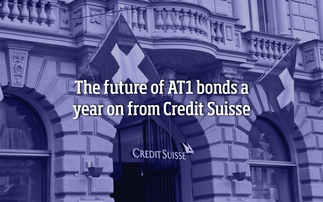
Key points
- Amid aggressive monetary tightening, the short duration profile of high yield bonds can help defend against rising rates
- Short-dated high yield bonds can offer enhanced yield, lower duration and higher risk-adjusted returns
- In the current environment, short-dated high yield bonds present interesting investment opportunities as they offer over 90% of the yield of the overall high yield market with about half the typical duration risk
Hawkish central bank rhetoric and aggressive rate hikes have many fixed income investors seeking shelter. Though rising rates can detract from most fixed income returns, high yield corporate bonds may warrant a closer look. In fact, for investors cautious on rates and seeking higher income, short-dated high yield bonds present compelling opportunities.
Exhibit 1: Three key benefits of short dated high yield1
#1 Lower duration risk
Rising rates are a reason for concern for any fixed income investor since bond prices decline when rates rise. However, the high yield asset class can offer some protection against rising rates, particularly since high yield bonds are often issued with shorter maturities than investment grade securities. The higher spreads can also help dampen the effects of rising rates. This enhanced spread serves as a cushion since spread tightening can help absorb rate changes or offset price declines. Given these characteristics, high yield has historically performed well and outpaced investment grade credit in rising-rate environments (Exhibit 2), while also generating strong returns across various environments. Contrary to many prior rising-rate periods, the current market is fraught with high inflation and macro uncertainty. While most fixed income assets have declined year to date, high yield bonds have held up better than longer-duration investment grade corporates.
Exhibit 2: High yield has historically outperformed investment grade in rising-rate environments
Past performance is not indicative of future results. Sources: Aegon AM, ICE BofA and Bloomberg. As of August 31, 2022. Based on monthly data and rate changes over the trailing 12 months from 31 August 2004 to 31 August 2022, totaling 217 periods. Out of the 217, 97 periods were characterized as falling, 47 periods were characterized as flat and 73 were characterized as rising. The August 2004 start date coincides with the first available data date for all three indices. Reflects average annualized index returns for the Bloomberg US High Yield Corporate index, ICE BofA 1-3 Year US Corporate and Government index, and the Bloomberg US Corporate Investment Grade index. Falling periods are described as when the Barclays US Treasury bellwether 10-year yield fell more than 0.25% since the last period. Rising periods were when the 10-year yield increased more than 0.25% since the last period. Flat periods are described as when the 10-year yield did not increase or decrease by 0.25% since the last period. Indices do not reflect the performance of an actual investment. It is not possible to invest directly in an index, which also does not take into account trading commissions and costs.
#2 Enhanced yield and relative value
For those investors concerned about rates, refining the focus to short-dated high yield bonds with a maturity of less than five years can provide opportunities to seek even greater protection against rising rates.
While there are many short-duration assets within the bond market, high yield currently offers a larger premium over investment grade bonds. This increased spread and higher coupons can provide compelling carry and income potential. Additionally, the incremental yield provided by high yield corporates should more than cover the duration, as evidenced by the enhanced yield-to-duration ratio or breakeven point (Exhibit 2).
Exhibit 3: High yield provides a higher yield-to-duration ratio
Past performance is not indicative of future results. Sources: ICE BofA and Bloomberg. Data as of September 30, 2022. Based on various ICE BofA indices. Indices do not reflect the performance of an actual investment. It is not possible to invest directly in an index, which also does not take into account trading commissions and costs.
Even within the broader high yield market, short-dated bonds offer interesting opportunities to add incremental yield. For example, using the 1-5 year BB-B variation of the ICE BofA US High Yield index as a proxy for the short-dated market, we can assess relative value within the high yield market by looking at the yield differential between shorter bonds and the overall high yield market.
Historically, the shorter high yield index has offered an average yield to worst that captures roughly 80% of the overall high yield market's yield with about half of the duration. Now, given recent rate and spread movements in the first half of 2022, the shorter index provides investors with 94% of the overall high yield market with about half of the duration risk. That means that as the short end of the curve shifts upward, investors have compelling opportunities to invest in short-dated high yield issues that have yields around 6% to 9% and a duration of approximately two to three years.
Exhibit 4: Short-dated high yield now captures 94% of the overall high yield market yield
Past performance is not indicative of future results. Sources: ICE BofA and Bloomberg. Depicts the yield to worst for the ICE BofA US Corporate High Yield 1-5 BB-B index (JVC4) and the ICE BofA US Corporate High Yield index (H0A0) over the last 10 years ending September 30, 2022. Indices do not reflect the performance of an actual investment. It is not possible to invest directly in an index, which also does not take into account trading commissions and costs.
#3 Lower volatility and compelling risk-adjusted returns
An emphasis on short duration or short-dated high yield may also help mitigate downside volatility — a common concern for high yield investors. Short-dated high yield bonds can be less susceptible to broad market moves driven by macro factors. In other words, shorter high yield bonds tend to exhibit greater price stability amid macro-induced volatility relative to longer-dated bonds. Lower volatility has historically resulted in better risk-adjusted returns for 1- to 5-year high yield bonds.
As shown in Exhibit 5, these shorter bonds have generated higher information ratios. This demonstrates that short-dated high bonds offer enhanced excess returns relative to the volatility of those returns. Although shorter-dated bonds could face refinancing risk, many high yield companies have termed out their balance sheets, resulting in few near-term maturity concerns in 2022 and 2023.
Exhibit 5: Shorter maturity high yield bonds (1 to 5 years) offer the potential for higher risk-adjusted returns
Past performance is not indicative of future results. Sources: Aegon AM and Bloomberg. Depicts the information ratio (excess return / excess return volatility) from December 31, 2010 through August 31, 2022. Based on the Bloomberg US Corporate High Yield Total Return Index Value Unhedged USD (Returns, Unhedged). Indices do not reflect the performance of an actual investment. It is not possible to invest directly in an index, which also does not take into account trading commissions and costs.
Short-dated high yield opportunities now
As central banks continue to fight inflation and implement monetary tightening policies, short-dated high yield bonds can offer compelling opportunities to lower duration risk, enhance yield and reduce volatility.
Similar to the broader high yield market, the repricing in 2022 is presenting relatively rare yield opportunities to add exposure at above-average levels. Additionally, while economic uncertainty is elevated, most high yield companies appear well-positioned to navigate an economic slowdown given stable fundamentals and muted defaults outlook.
All this leads us to a constructive outlook on the high yield market. For investors seeking high income and lower duration risk, short-dated high yield opportunities may be worth a closer look.
1All investments contain risk and may lose value.
Disclaimer:
For Professional Clients only and not to be distributed to or relied upon by retail clients.
The principal risk of this service is the loss of capital. Please note that other risks will be present.
Opinions and/or example trades/securities represent our understanding of markets both current and historical and are used to promote Aegon Asset Management's investment management capabilities: they are not investment recommendations, research or advice. Sources used are deemed reliable by Aegon Asset Management at the time of writing. Please note that this marketing is not prepared in accordance with legal requirements designed to promote the independence of investment research, and is not subject to any prohibition on dealing by Aegon Asset Management or its employees ahead of its publication.
All data is sourced to Aegon Asset Management UK plc unless otherwise stated. The document is accurate at the time of writing but is subject to change without notice.
Data attributed to a third party ("3rd Party Data") is proprietary to that third party and/or other suppliers (the "Data Owner") and is used by Aegon Asset Management under licence. 3rd Party Data: (i) may not be copied or distributed; and (ii) is not warranted to be accurate, complete or timely. None of the Data Owner, Aegon Asset Management or any other person connected to, or from whom Aegon Asset Management sources, 3rd Party Data is liable for any losses or liabilities arising from use of 3rd Party Data.
Aegon Asset Management UK plc is authorised and regulated by the Financial Conduct Authority.
AdTrax: 5065187.1 Exp Date: 31 October 2023.















